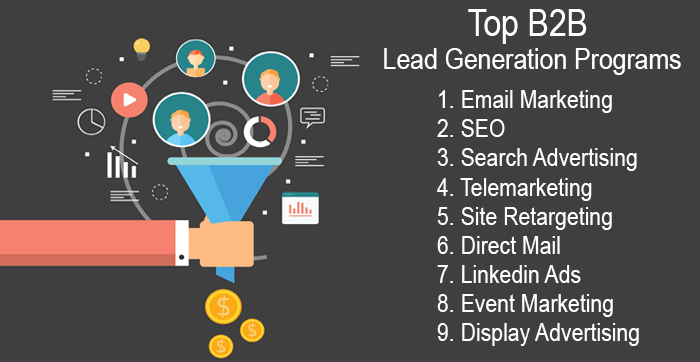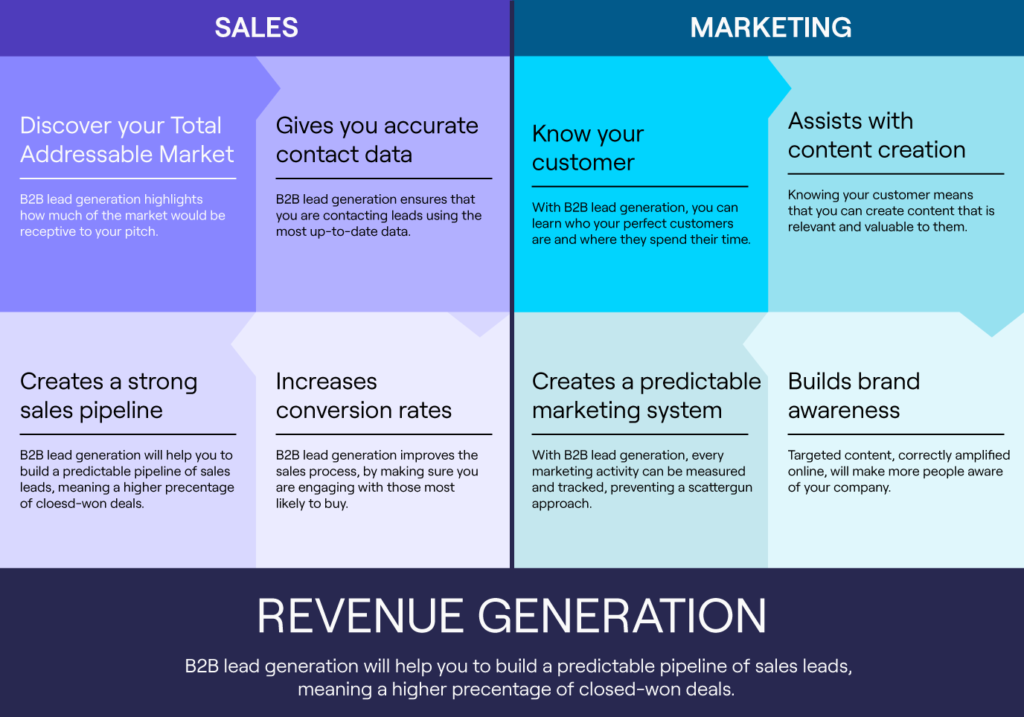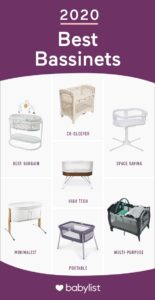Page Contents
ToggleB2B lead generation is the process of identifying potential business customers and attracting them to your products or services. It focuses on creating interest among other businesses.
B2B lead generation is crucial for businesses aiming to sell products or services to other businesses. This process involves identifying potential business clients and nurturing their interest until they become paying customers. Effective B2B lead generation strategies include content marketing, social media outreach, and targeted advertising.
By focusing on high-quality leads, businesses can improve their sales efficiency and close more deals. Utilizing tools like CRM systems and marketing automation can further streamline the lead generation process. Ultimately, successful B2B lead generation drives revenue growth and builds long-term business relationships.
The Essence Of B2b Lead Generation
B2B lead generation is crucial for businesses that sell products or services to other businesses. It’s the lifeline of any B2B company, ensuring a steady stream of potential clients. This process involves identifying and attracting potential buyers, turning them into leads, and nurturing them towards a sale. Let’s dive deeper into what B2B lead generation entails and its importance.
Defining B2b Lead Generation
B2B lead generation is the process of identifying and attracting potential business clients. This involves various strategies and techniques to capture the interest of your target market. The goal is to turn these interested parties into qualified leads who are likely to purchase your products or services.
Common methods for generating B2B leads include:
- Content Marketing
- Email Campaigns
- Social Media Outreach
- Search Engine Optimization (SEO)
- Paid Advertising
Importance For Businesses
B2B lead generation is vital for sustaining business growth. It helps companies find new clients and maintain a healthy sales pipeline. Without a robust lead generation strategy, businesses may struggle to find new opportunities and grow.
Here are key reasons why B2B lead generation is important:
- Increases Sales Opportunities: More leads mean more chances to convert them into customers.
- Builds Brand Awareness: Engaging with potential clients raises your brand’s visibility.
- Enhances Market Reach: Expands your business reach beyond your current customer base.
- Improves Revenue: More leads can result in increased sales and revenue.
| Benefits | Description |
|---|---|
| Increases Sales Opportunities | More leads provide more chances for conversion. |
| Builds Brand Awareness | Engaging with potential clients boosts visibility. |
| Enhances Market Reach | Reaches beyond your current customer base. |
| Improves Revenue | Increased leads can lead to higher sales. |

Credit: trendemon.com
Identifying Your Ideal B2b Leads
Identifying your ideal B2B leads is crucial for successful lead generation. It ensures your marketing efforts target the right audience. This process involves understanding key characteristics and effective segmentation strategies.
Characteristics Of High-quality Leads
High-quality leads exhibit specific traits. Identifying these traits helps in targeting potential customers effectively. Here are some characteristics to look for:
- Decision-Making Authority: Leads who can make purchasing decisions.
- Budget Availability: Leads with the financial capacity to buy your product.
- Industry Relevance: Leads from industries that benefit from your solution.
- Need for Your Solution: Leads with a clear need for what you offer.
- Engagement Level: Leads who actively engage with your content.
Segmentation Strategies
Segmentation divides your leads into smaller groups. This allows for targeted marketing. Below are effective segmentation strategies:
- Demographic Segmentation: Group leads based on company size, industry, and location.
- Behavioral Segmentation: Segment leads by their interactions with your brand.
- Firmographic Segmentation: Classify leads based on company attributes like revenue and number of employees.
- Technographic Segmentation: Divide leads by the technology they use.
The following table summarizes these segmentation strategies:
| Segmentation Type | Criteria |
|---|---|
| Demographic | Company size, industry, location |
| Behavioral | Brand interactions |
| Firmographic | Company revenue, employee count |
| Technographic | Technology usage |
Attracting Potential B2b Buyers
Attracting potential B2B buyers is crucial for business growth. This involves identifying and engaging with companies interested in your products or services. To achieve this, businesses employ various strategies to capture the attention of decision-makers.
Inbound Vs. Outbound Approaches
There are two primary approaches for attracting B2B buyers: inbound and outbound.
| Inbound | Outbound |
|---|---|
| Focuses on attracting customers through content. | Involves direct outreach to potential customers. |
| Uses blogs, social media, and SEO. | Uses cold emails, calls, and ads. |
| Relies on organic growth. | Relies on proactive efforts. |
Content Marketing As A Magnet
Content marketing is a powerful tool for attracting potential B2B buyers. By creating valuable and relevant content, businesses can draw in their target audience.
Here are some effective content marketing strategies:
- Creating informative blog posts
- Developing engaging social media content
- Publishing whitepapers and eBooks
- Hosting webinars and online events
These methods help establish your brand as an industry expert. They also build trust with potential buyers, making them more likely to convert.

Credit: www.wordstream.com
Lead Generation Channels And Tactics
Understanding the various channels and tactics for B2B lead generation is crucial. These methods help businesses connect with potential clients. Below, we explore three main approaches.
Digital Marketing
Digital marketing is a powerful tool for generating B2B leads. It includes a variety of tactics:
- Content Marketing: Create valuable content to attract prospects.
- SEO: Optimize your website to rank higher on search engines.
- Social Media Marketing: Use platforms like LinkedIn to engage with potential clients.
- Paid Advertising: Utilize PPC campaigns to reach a targeted audience.
- Email Marketing: Send personalized emails to nurture leads.
Effective use of these strategies can significantly boost your lead generation efforts.
Cold Outreach Methods
Cold outreach methods involve reaching out to potential clients directly. These methods may include:
- Cold Calling: Contacting prospects via phone to introduce your services.
- Cold Emails: Sending personalized emails to potential leads.
- LinkedIn Messages: Using LinkedIn to send direct messages to prospects.
These approaches can be effective if done correctly and respectfully. Personalize each message for better results.
Networking And Events
Networking and events provide direct interaction opportunities with potential clients. Consider the following tactics:
- Trade Shows: Attend industry-specific events to meet prospects.
- Conferences: Participate in conferences to network with industry leaders.
- Webinars: Host or attend webinars to engage with potential clients.
- Networking Groups: Join groups to expand your professional network.
These events allow face-to-face interactions, fostering trust and relationships.
Conversion-oriented Lead Nurturing
Conversion-oriented lead nurturing focuses on turning potential leads into customers. It involves educating prospects, personalized communication, and fostering relationships. Successful lead nurturing ensures higher conversion rates and maximized ROI.
Educational Content
Creating educational content is crucial for lead nurturing. Informative articles, whitepapers, and case studies provide value. They help prospects understand your product and industry trends.
Use infographics and videos to simplify complex topics. Educational content builds trust and positions your brand as an industry expert.
- Blog posts
- Whitepapers
- Case studies
- Infographics
- Videos
Personalized Communication
Personalized communication enhances lead nurturing. Tailor emails and messages to address specific needs. Use the recipient’s name and company details to create a personal touch.
Segment your audience based on their behavior and interests. Send targeted content that resonates with them. This approach increases engagement and conversion rates.
| Type of Personalized Communication | Benefits |
|---|---|
| Direct and personal interaction | |
| Social Media Messages | Engages prospects on their preferred platforms |
| Personalized Content | Resonates with specific interests |

Credit: www.linkedin.com
Measuring Lead Generation Success
Understanding the success of your B2B lead generation efforts is crucial. It helps improve strategies and maximize ROI. This section breaks down key methods to measure lead generation success.
Key Performance Indicators
Key Performance Indicators (KPIs) play a pivotal role. They help track the effectiveness of your lead generation strategy. Here are some essential KPIs to consider:
- Lead Conversion Rate: The percentage of leads that convert into customers.
- Cost Per Lead (CPL): The total cost of generating a single lead.
- Customer Acquisition Cost (CAC): The cost to acquire a new customer.
- Return on Investment (ROI): The overall profitability of your lead generation campaign.
- Lead Velocity Rate (LVR): The growth rate of qualified leads month over month.
Analyzing Lead Quality And Quantity
Both the quality and quantity of leads matter for success. Here’s how to analyze them:
| Aspect | Description |
|---|---|
| Lead Quality | Assess if leads match your ideal customer profile. |
| Lead Quantity | Count the number of leads generated over a period. |
Consider the following steps to analyze lead quality:
- Evaluate lead engagement levels.
- Identify the lead’s position in the buying cycle.
- Assess how well leads fit your target market.
To analyze lead quantity, track the number of leads over time. Use this data to identify trends and optimize your strategies.
Tools And Technologies For Efficiency
Efficient B2B lead generation demands the right tools and technologies. These tools streamline the process and ensure higher conversion rates. This section explores the top tools that enhance efficiency in B2B lead generation.
Crm Systems
Customer Relationship Management (CRM) systems are essential for managing and nurturing leads. CRMs store all customer data in one place. This data includes contact information, interaction history, and purchasing behavior.
Popular CRM systems include:
- Salesforce: A robust CRM with extensive customization options.
- HubSpot: Known for its user-friendly interface and free basic plan.
- Zoho CRM: Offers a wide range of features at an affordable price.
Using a CRM system helps in tracking leads through the sales funnel. It improves communication and ensures no lead gets overlooked.
Automation Platforms
Automation platforms save time and effort by automating repetitive tasks. These platforms handle email marketing, social media posts, and more. Automation ensures consistent follow-ups and improves lead nurturing.
Top automation platforms include:
- Marketo: Known for its advanced email marketing capabilities.
- Pardot: A Salesforce product focused on B2B marketing automation.
- ActiveCampaign: Combines email marketing, automation, and CRM features.
Automation platforms also provide analytics and reporting. This data helps in measuring the success of campaigns and optimizing strategies.
| Tool | Primary Use | Key Features |
|---|---|---|
| Salesforce | CRM | Customization, Analytics, Integration |
| HubSpot | CRM | User-Friendly, Free Plan, Marketing Tools |
| Marketo | Automation | Email Marketing, Lead Scoring, Analytics |
| Pardot | Automation | B2B Focused, Integration with Salesforce, Lead Nurturing |
Challenges In B2b Lead Generation
B2B lead generation is crucial for businesses aiming to expand their client base. Despite its importance, many companies face significant challenges. These hurdles can hinder the effectiveness of lead generation efforts. Understanding these challenges can help businesses devise strategies to overcome them.
Overcoming Common Obstacles
Several common obstacles often complicate B2B lead generation. Businesses struggle with finding quality leads. Quantity doesn’t always equal quality. Filtering through numerous prospects to find those genuinely interested is tough.
- Data Management: Poor data management can lead to missed opportunities.
- Resource Allocation: Many businesses lack sufficient resources to dedicate to lead generation.
- Personalization: Crafting personalized messages for each prospect is time-consuming.
Addressing these challenges requires a strategic approach. Utilizing advanced CRM tools can improve data management. Allocating dedicated resources and automating certain tasks can enhance efficiency. Personalization can be achieved through segmented marketing efforts.
Staying Ahead Of Market Changes
The market is always evolving. Staying ahead is essential for successful B2B lead generation. Market changes can include shifts in customer behavior, new technologies, and economic fluctuations.
Businesses need to be agile. This involves constantly updating marketing strategies and tools. Regularly analyzing market trends can provide valuable insights. Being proactive rather than reactive is key.
| Challenge | Solution |
|---|---|
| Shifts in Customer Behavior | Conduct regular customer surveys and feedback sessions. |
| New Technologies | Invest in latest marketing tools and platforms. |
| Economic Fluctuations | Develop flexible marketing budgets and plans. |
Staying ahead means constant learning and adaptation. Companies must train their teams on new tools. Flexibility and adaptability are crucial for overcoming market changes.
Future Of B2b Lead Generation
The future of B2B lead generation is rapidly evolving. This transformation is driven by technological advancements and changing buyer behaviors. Companies must stay ahead of these changes to thrive in a competitive market.
Emerging Trends
Several emerging trends are reshaping B2B lead generation. These trends include automation, AI, and data analytics. Automated tools streamline lead generation processes, saving time and resources.
Artificial Intelligence (AI) enhances targeting and personalization. AI can analyze vast amounts of data quickly, providing valuable insights. Data analytics help businesses understand customer behavior and preferences better.
- Automation tools
- AI-driven insights
- Advanced data analytics
Adapting To New Buyer Behaviors
B2B buyers are changing their purchasing habits. They prefer online research and self-service options. Companies must adapt to these behaviors to stay relevant.
Content marketing becomes crucial. High-quality content educates buyers and builds trust. Social media also plays a vital role. Engaging with prospects on platforms like LinkedIn can generate quality leads.
| Old Behavior | New Behavior |
|---|---|
| Direct sales calls | Online research |
| In-person meetings | Virtual meetings |
| Traditional advertising | Content marketing |
- Create engaging content
- Utilize social media
- Offer self-service options
Frequently Asked Questions
What Is B2b Lead Generation Examples?
B2B lead generation examples include email marketing, LinkedIn outreach, webinars, content marketing, and SEO. These methods attract potential business clients.
What Is B2b In Simple Words?
B2B stands for Business-to-Business. It refers to companies selling products or services to other businesses.
How To Generate B2b Leads?
Generate B2B leads by optimizing your website for SEO, leveraging LinkedIn, using email marketing, attending trade shows, and offering valuable content.
What Is The Difference Between B2b And Lead Generation?
B2B stands for Business-to-Business, involving transactions between businesses. Lead generation identifies and attracts potential customers.
What Is B2b Lead Generation?
B2B lead generation is identifying potential business customers and attracting them to your product or service.
Why Is B2b Lead Generation Important?
It drives business growth by creating opportunities for sales and revenue through targeted customer acquisition.
How Does B2b Lead Generation Work?
It involves identifying target companies, engaging decision-makers, and nurturing relationships to convert them into customers.
What Are Common B2b Lead Generation Strategies?
Common strategies include content marketing, social media outreach, email campaigns, and networking events.
Conclusion
Understanding B2B lead generation is crucial for business growth. Effective strategies attract potential clients and drive sales. Implementing these tactics can transform your business pipeline. Stay ahead by adapting and refining your methods. Invest time in learning and optimizing for the best results.
Start generating quality leads today for a successful tomorrow.



